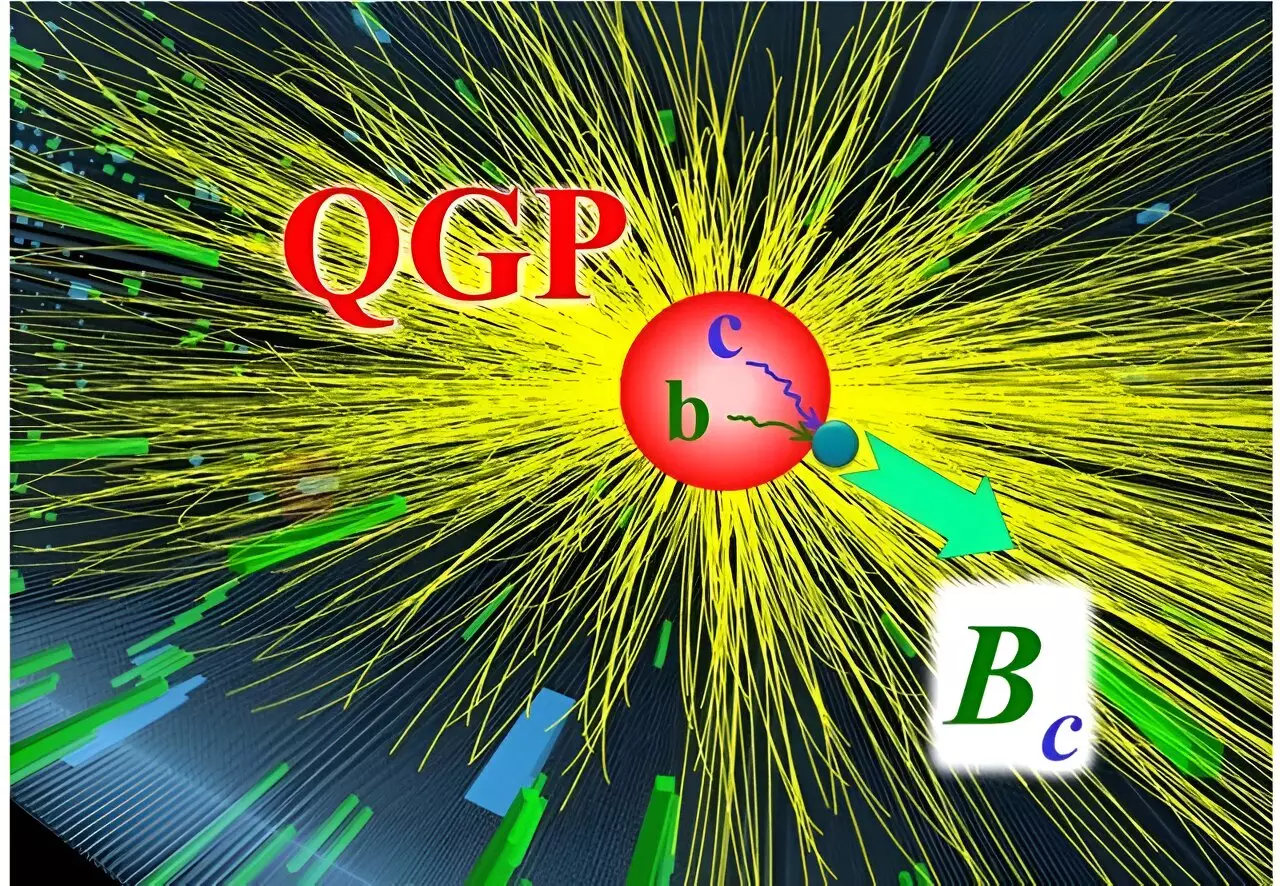A recent study conducted by researchers from the HEFTY Topical Collaboration delved into the recombination of charm and bottom quarks into Bc mesons within the quark-gluon plasma (QGP). Through the development of a transport model, these scientists were able to simulate the kinetics of heavy-quark bound states within the expanding QGP fireball that is created during high-energy heavy-ion collisions. This model has been previously used to explain the production of charm-anticharm and bottom-antibottom bound states, and now offers insights into the behavior of Bc particles, which are charm-antibottom bound states. The findings of this research were published in the journal Physical Review C.
One of the key challenges in understanding the formation of QGP in high-energy heavy-ion collisions is the transient nature of this state. The QGP only exists for a short period before transforming into countless observable particles. To unravel the mysteries of QGP formation, researchers rely on detecting unique signatures that distinguish these collisions from others, such as proton-proton collisions. Through theoretical simulations involving the diffusion of charm and bottom quarks in the QGP, the study revealed that the recombination of these quarks leads to an increased production of Bc mesons. This particular mechanism is exclusive to heavy-ion collisions and serves as a distinct signature of QGP formation.
By utilizing realistic spectra of charm and bottom quarks derived from their movements within the QGP, researchers were able to quantify the recombination processes that result in the formation of Bc mesons. The analysis demonstrated a significant enhancement in the yield of Bc mesons in lead (Pb) nucleus collisions compared to proton-proton collisions. This effect is most pronounced when considering slow-moving Bc mesons in direct collisions of Pb nuclei, where a substantial QGP fireball containing a significant number of charm and bottom quarks is generated. Notably, the theoretical predictions align with preliminary data from the CMS collaboration at the Large Hadron Collider (LHC).
While the current data support the theory regarding the production of Bc mesons within the QGP, there remains a crucial aspect that needs further investigation. The existing data lack the sensitivity required to detect slow-moving Bc mesons, necessitating future experiments to confirm this signature of QGP formation conclusively. As advancements in technology and experimental methodologies continue to evolve, the potential for more precise measurements and observations will offer a critical test of the mechanisms governing heavy-ion collisions and QGP formation.


Leave a Reply